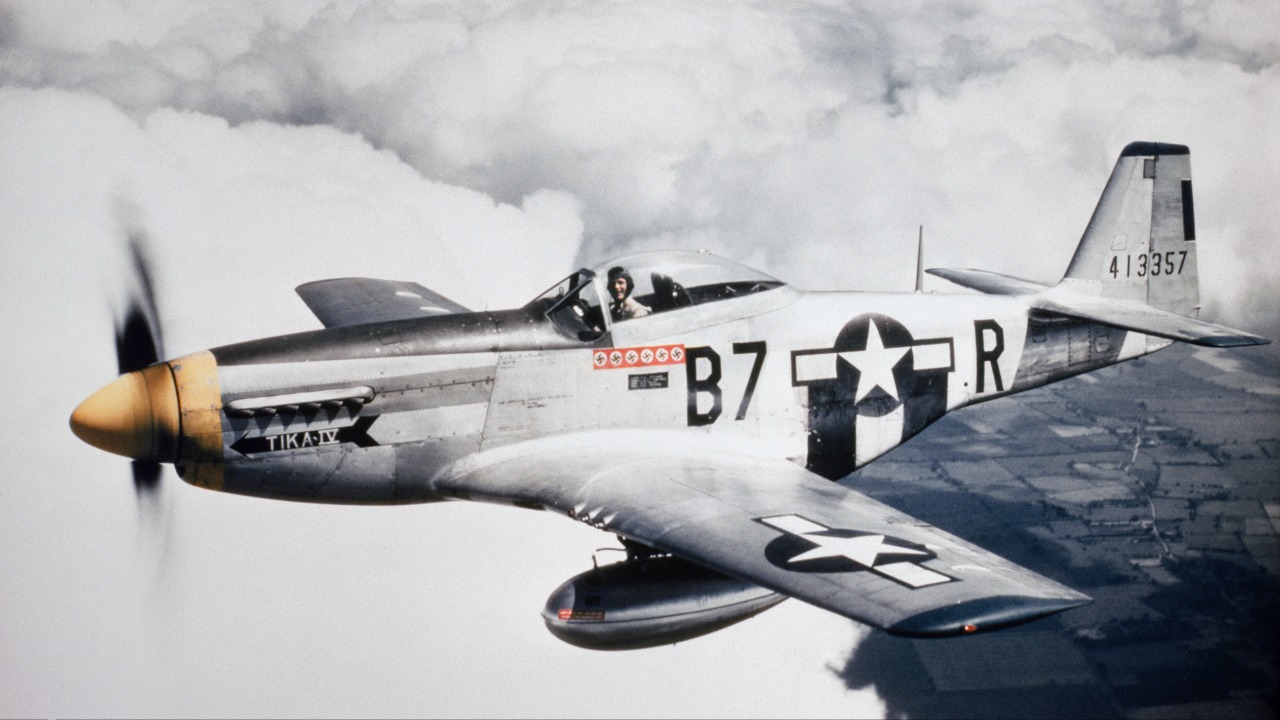
The P-51 Mustang stands as an iconic World War II fighter plane renowned for its exceptional performance capabilities, particularly its top speed and horsepower output that defined its role in aerial combat. Recent analysis highlights how the aircraft’s design enabled it to achieve speeds and power levels that outpaced many contemporaries, making it a pivotal asset for Allied forces. SlashGear provides an in-depth look at these features.
Development History of the P-51 Mustang
The P-51 Mustang’s origins trace back to 1940 when North American Aviation designed it in response to British requirements for a new fighter aircraft. The rapid prototyping process led to its first flight within a remarkably short timeframe, showcasing the urgency and innovation of wartime aircraft development. Initially, the Mustang was equipped with an Allison engine, but it soon became apparent that a more powerful engine was necessary to meet combat demands.
Key milestones in the P-51’s production included the pivotal shift from the Allison engine to the Rolls-Royce Merlin. This change significantly enhanced the aircraft’s performance, allowing it to meet the rigorous demands of aerial combat. By mid-1942, the Mustang was deployed in significant numbers, thanks to accelerated wartime production schedules. The evolution of variants, such as the P-51D, further optimized the aircraft for long-range escort missions over Europe, cementing its role as a critical component of the Allied air strategy.
Engine Specifications and Horsepower
The heart of the P-51 Mustang’s power lay in its Packard V-1650 Merlin engine, a licensed version of the Rolls-Royce Merlin. This supercharged V-12 engine delivered up to 1,490 horsepower at takeoff, providing the necessary thrust for high-speed engagements. The engine’s design included multiple supercharger stages, which allowed for variations in horsepower output at different altitudes, reaching up to 1,720 horsepower in war emergency power settings.
Maintenance and reliability were crucial for the Mustang’s operational success. The engine’s fuel requirements and robust construction contributed to its endurance in combat scenarios. These factors ensured that the P-51 could maintain its performance over extended missions, a vital capability for escorting bombers deep into enemy territory. The engine’s reliability also minimized downtime, allowing for more frequent sorties and sustained pressure on enemy forces.
Aerodynamic Features Contributing to Speed
The P-51 Mustang’s speed was not solely a product of its powerful engine; its aerodynamic design played a crucial role. The laminar-flow wing design was instrumental in reducing drag, enabling efficient high-speed flight without excessive power demands. This innovation allowed the Mustang to achieve impressive speeds while conserving fuel, a critical advantage in long-range missions.
Innovations in the fuselage and cooling systems further enhanced the Mustang’s performance. The ventral radiator scoop, for instance, minimized drag while effectively managing engine heat during sustained high-speed operations. The use of lightweight aluminum alloys in the aircraft’s construction also contributed to its agility and speed, allowing the Mustang to outmaneuver many of its contemporaries in aerial combat.
Achieved Top Speed and Performance Metrics
The P-51D variant of the Mustang achieved a maximum level speed of approximately 437 miles per hour at 25,000 feet under optimal conditions. This impressive speed was a testament to the aircraft’s advanced engineering and design. Factors such as altitude and load could influence the Mustang’s speed, with combat configurations sometimes reducing it to around 390 mph. Nevertheless, the Mustang’s performance metrics, including a service ceiling of 41,900 feet, underscored its superiority in the skies.
Real-world testing during wartime trials provided valuable data on the Mustang’s capabilities. Dive and climb rates, along with propeller pitch adjustments, played significant roles in the aircraft’s acceleration to top speed. These performance metrics were crucial for pilots engaging in dogfights and escort missions, where speed and agility often determined the outcome of aerial engagements.
Combat Applications and Legacy Impact
The P-51 Mustang’s combat applications were pivotal during World War II, particularly in escorting bombers on missions in 1944. Its speed and range enabled it to effectively counter Luftwaffe interceptors, providing crucial protection for Allied bombing raids. The Mustang’s ability to engage enemy fighters and return safely was a significant factor in the success of these missions, contributing to the overall Allied victory.
After the war, the Mustang found new life in various roles, including air racing. Modified versions of the aircraft pushed beyond 500 mph in the 1946 Thompson Trophy race, showcasing the Mustang’s enduring performance capabilities. The aircraft’s legacy continues to influence modern aviation design, with its speed and power benchmarks inspiring subsequent generations of jet fighters. The P-51 Mustang remains a symbol of innovation and excellence in military aviation history.